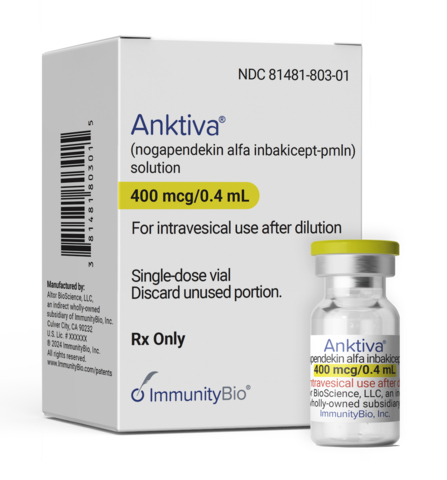Amicus Therapeutics has recently received approval from the US Food and Drug Administration (FDA) for its drugs Pombiliti (cipaglucosidase alfa-atga) and Opfolda (miglustat) for adults living with late-onset Pompe disease (LOPD) who are not improving on their current enzyme replacement therapy (ERT).
“FDA approval of Pombiliti and Opfolda is a testament to the power of science, medicine and our passionate determination to improve the lives of people living with Pompe disease. This approval embodies our Amicus spirit, passion and resilience and is a very meaningful step for the Pompe community. I am just so immensely proud of our team, and so very grateful to everyone who has worked to bring this medicine to this approval. Most especially to all of the people living with Pompe around the world,” said John F. Crowley, executive chairman of Amicus Therapeutics, in the company’s press release.
Pompe disease, also referred to as acid-maltase disease and glycogen storage disease II, is an uncommon genetic disorder characterized by the gradual weakening of both cardiac and skeletal muscles.
The condition arises from mutations in a specific gene responsible for producing an enzyme known as acid alpha-glucosidase (GAA). The body relies on this enzyme to break down glycogen, a stored form of sugar utilized for energy production. The enzyme carries out its essential role within cellular compartments called lysosomes, which function as hubs for cellular waste disposal. Lysosomes ingest a variety of substances, including glycogen, which GAA converts into glucose.
Pompe disease primarily manifests as progressive muscle weakness, particularly affecting the skeletal muscles in regions such as the hips, legs, shoulders, arms and diaphragm.
XTALKS WEBINAR: Strategic Design Decisions in Rare Disease Trials
Live and On-Demand: Thursday, February 8, 2024, at 11 am EST (4 pm GMT/UK)
Register for this free webinar to discover invaluable strategies to effectively navigate rare disease trials, enhancing endpoint adaptation, data quality and clinical interpretation.
How Do Pombiliti and Opfolda Work?
Pombiliti is a specialized hydrolytic enzyme with a specific affinity for lysosomal glycogen. This recombinant human α-glucosidase (rhGAA) is manufactured using a perfusion methodology involving a Chinese hamster ovary (CHO) cell line, resulting in N-glycans of CHO cell origin.
Opfolda, conversely, is an N-alkylated iminosugar, functioning as a synthetic analog of D-glucose. The Pombiliti and Opfolda combination constitutes a unique two-component therapy. It comprises cipaglucosidase alfa-atga, an rhGAA enriched with bis-M6P, which enhances its affinity for uptake via the M6P receptor. This modification maintains its ability to convert into the enzyme’s most active form. Additionally, it incorporates miglustat, an oral enzyme stabilizer designed to reduce enzyme activity loss within the bloodstream.
Within the cell, Pombiliti undergoes proper processing, transforming into its most active and mature form to efficiently break down glycogen. Meanwhile, Opfolda functions as an enzyme stabilizer, serving to maintain enzyme stability in the bloodstream.
Clinical evidence has indicated that the combination of Pombiliti and Opfolda has delivered substantial enhancements across key aspects of Pompe disease, encompassing muscle strength, pulmonary and motor function, patient-reported outcomes and biomarkers.
Notably, treatment with Pombiliti and Opfolda has resulted in clinically meaningful improvements surpassing those observed in patients receiving standard of care, including those who had prior experience with ERT. Patients who received the combination of Pombiliti and Opfolda showed an average improvement of 21 meters from their baseline walking distance. In contrast, those who received a non-US-approved alglucosidase alfa product with placebo walked an average of 8 meters farther from their baseline.
Throughout the course of extensive clinical trials, Pombiliti and Opfolda have consistently exhibited a favorable safety profile, and patients have generally tolerated the treatment well. Among the most frequently reported adverse reactions (occurring in ≥ five percent of patients) in the combined safety population across the three clinical trials were headache, diarrhea, fatigue, nausea, abdominal pain and fever (pyrexia).
Related: Bespoke Gene Therapy Consortium Selects 8 Rare Diseases for Clinical Trial Portfolio
Price of Pombiliti and Opfolda Therapy
Amicus Therapeutics is set to introduce Pombiliti and Opfolda to the US market without delay, with an annual price of $650,000 for patients with a median weight.
To further assist patients and their caregivers in the US, Amicus Assist is available to provide support, aiding patients in accessing their medication and identifying potential sources of financial assistance.
Other Treatments for Pompe Disease
In addition to the Pombiliti and Opfolda therapy, there are other FDA-approved treatments available for Pompe disease.
In early 2021, the FDA approved Sanofi’s Nexviazyme, an ERT administered via intravenous injection. It is indicated for patients aged one year and older who have LOPD. In pivotal Phase III trials, Nexviazyme demonstrated improvements in respiratory function and walking distance measures in individuals with LOPD, establishing a favorable safety profile.
Sanofi also offers another ERT for Pompe disease known as Myozyme, which received FDA approval in 2006, and Lumizyme in 2010 for late-onset disease. These treatments are suitable for patients of all ages. Myozyme has been shown to improve ventilator-free survival in patients with infantile-onset Pompe disease compared to untreated historical controls. It has also demonstrated the ability to stabilize percent predicted forced vital capacity in patients with LOPD. Lumizyme, another hydrolytic lysosomal glycogen-specific enzyme for patients with Pompe disease (GAA deficiency), has shown clinical evidence of increasing six-minute walk distances by an average of 25.1 meters (approximately 82 feet) in patients. In contrast, patients on the placebo experienced an average decrease of 3 meters (about 10 feet) in walked distance.












Join or login to leave a comment
JOIN LOGIN